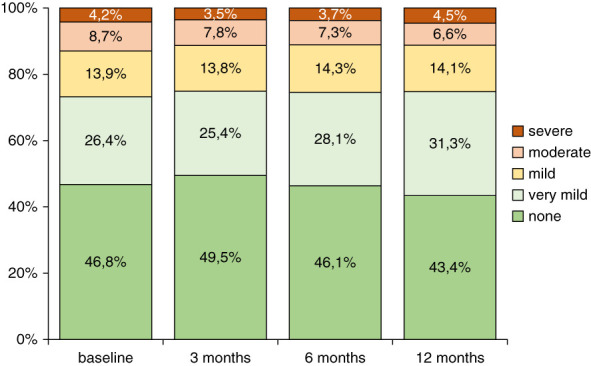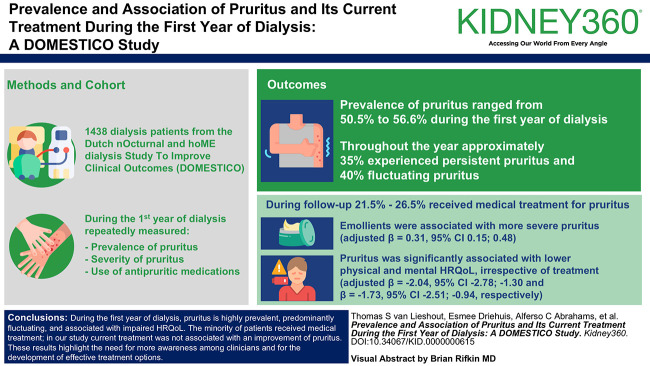Prevalence and Association of Pruritus and its Current Treatment during the First Year of Dialysis: A Dutch Nocturnal and Home Dialysis Study to Improve Clinical Outcomes Study.
IF 3
Q1 UROLOGY & NEPHROLOGY
引用次数: 0



透析第一年期间瘙痒症的患病率和关联性及其当前治疗方法:DOMESTICO 研究。
背景:瘙痒是透析患者的常见病,与健康相关的生活质量(HRQoL)受损和睡眠障碍有关。其病理生理学仍不清楚,导致治疗方案有限,缺乏治疗指南。目前尚未研究透析开始后瘙痒症的确切发展轨迹以及目前的医疗状况:方法:研究对象为荷兰改善临床结果的夜间和夜间透析研究(DOMESTICO)中的透析患者(1438 人)。结果参数包括瘙痒症的发病率、瘙痒症的严重程度和止痒药物的使用情况,在透析的第一年内反复测量。采用线性混合模型对治疗、瘙痒和生活质量之间的关系进行了纵向研究:结果:在透析的第一年中,瘙痒症的发病率从 50.5% 到 56.6% 不等。在这一年中,约 35% 的人有持续性瘙痒,40% 的人有波动性瘙痒。在随访期间,21.5%至26.5%的患者接受了瘙痒症治疗。润肤剂与更严重的瘙痒症有关(调整后的 β = 0.31,95% CI 0.15; 0.48),其余治疗方法没有任何关联。瘙痒与较低的身体和心理 HRQoL(调整后 β = -2.04,95% CI -2.78;-1.30 和 β =-1.73,95% CI -2.51;-0.94)明显相关,与治疗方法无关:结论:在透析的第一年中,瘙痒症的发病率很高,主要呈波动性,并与患者的 HRQoL 受损有关。少数患者接受了药物治疗;在我们的研究中,目前的治疗与瘙痒症的改善无关。这些结果突出表明,临床医生需要提高对瘙痒症的认识,并开发有效的治疗方案。
本文章由计算机程序翻译,如有差异,请以英文原文为准。
求助全文
约1分钟内获得全文
求助全文

 求助内容:
求助内容: 应助结果提醒方式:
应助结果提醒方式:


